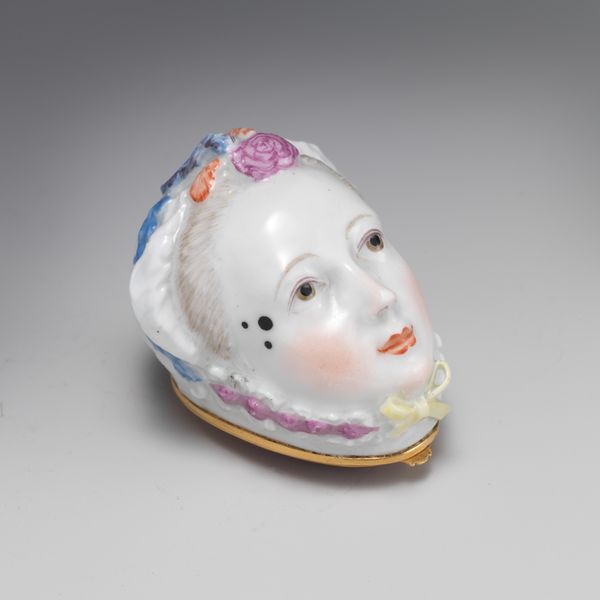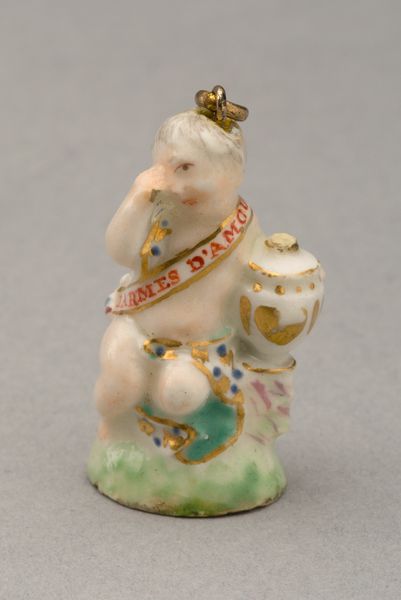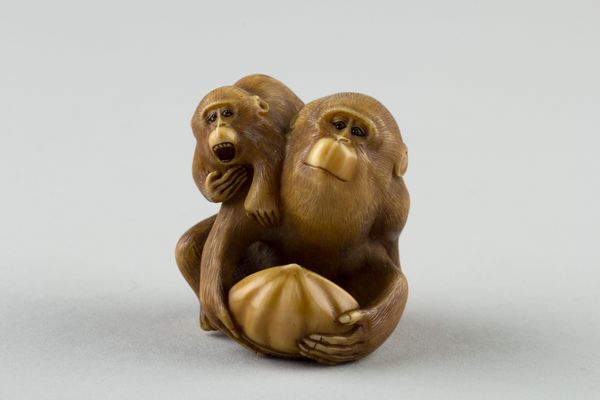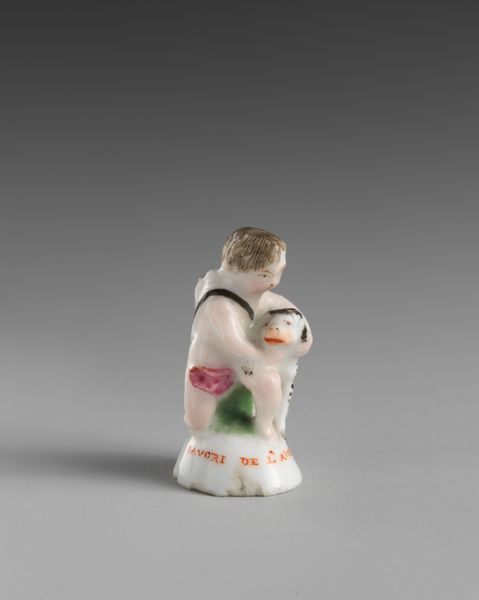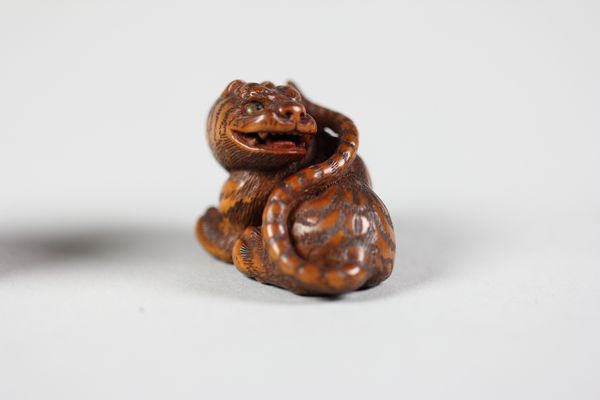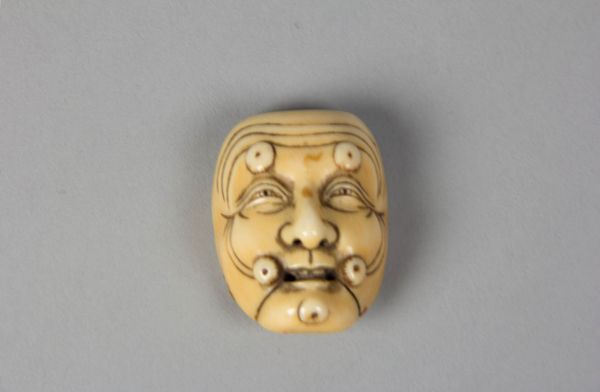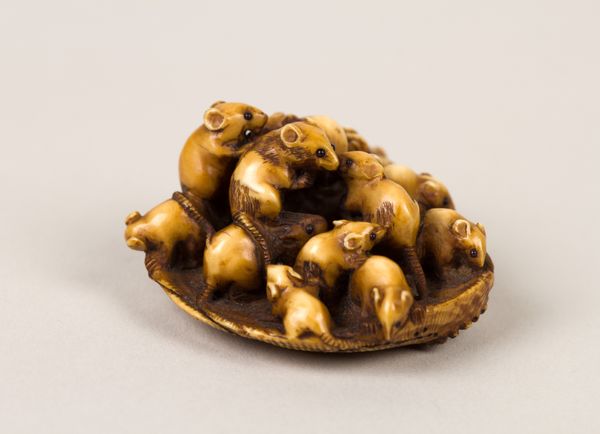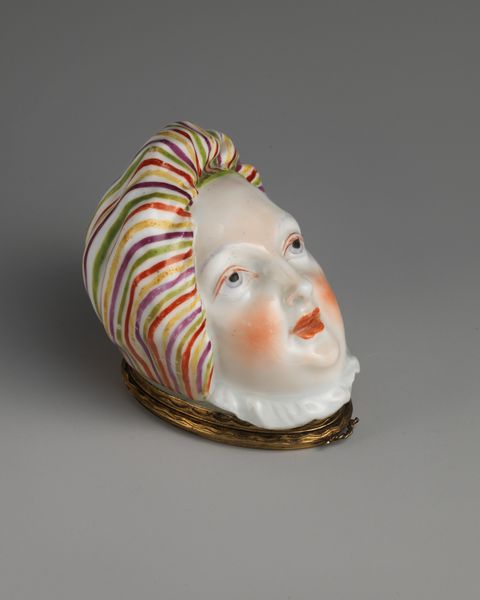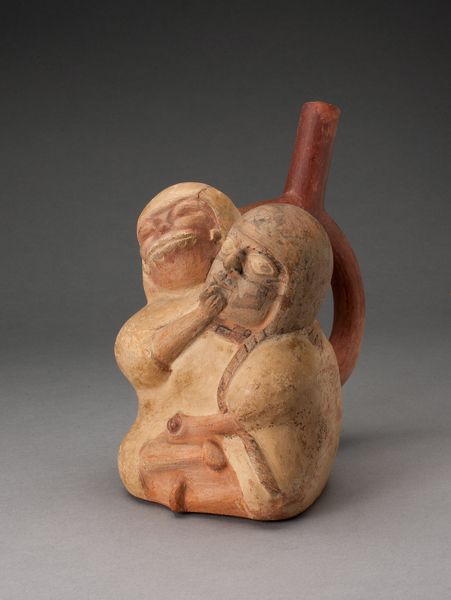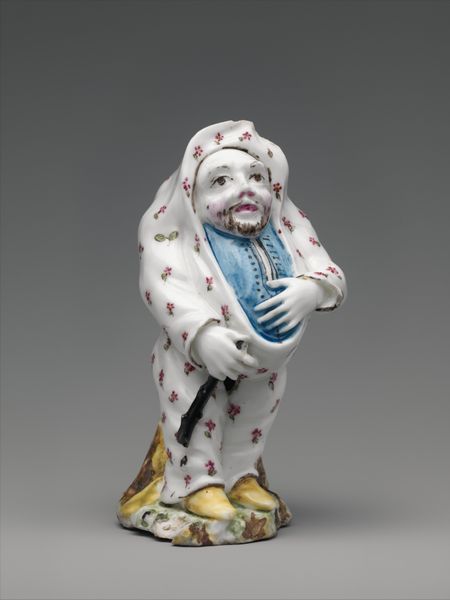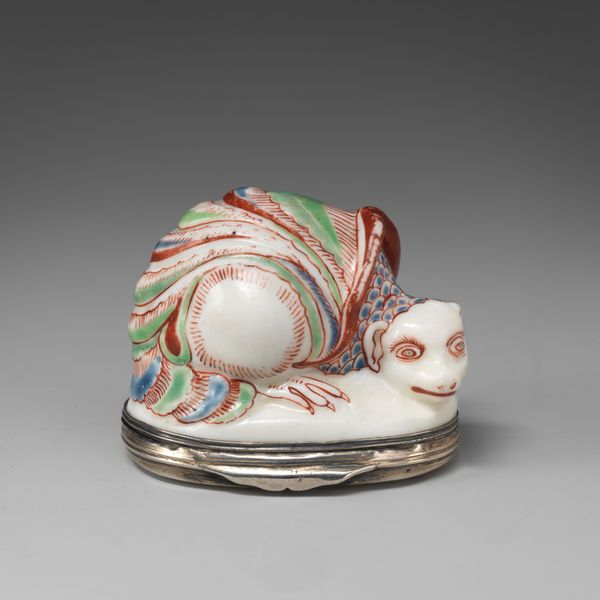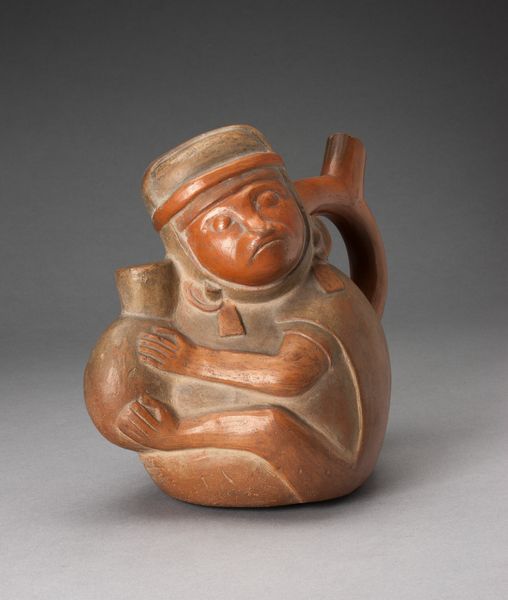
carving, ceramic, ivory
carving
asian-art
ceramic
ukiyo-e
figuration
folk-art
ivory
miniature
Dimensions: H. 1 in. (2.5 cm); W. 1 3/8 in. (3.5 cm)
Copyright: Public Domain
Curator: Oh, what a delightful find! Look at this *Dog Amulet (Inu Hariko)*, likely crafted sometime between 1825 and 1875. The museum attributes it to Shitayama. Editor: It's utterly charming, in a quietly persistent way. What strikes me first is the overall miniaturization—the formal compression that seems almost unbearable until you lock in with the artisan's hand at work. It projects a strange serenity, but there is a hint of mischievous energy waiting to get out. Curator: Indeed. It’s miniature art—carving from ivory and ceramic to this level is impressive! There’s folk art and ukiyo-e influence going on here. Editor: Precisely! Notice how the basal plane has been treated with fractal geometries to reflect this? See the zigzags and mountain range imagery. These designs don’t simply fill the available space, rather, they’re a sophisticated visual code speaking directly to a local Japanese aesthetic of balance and order, a profound example of what we call 'form follows function.’ Curator: And that sweet face! I imagine someone lovingly holding this close, believing in its protective magic. These Dog Amulets were gifted, particularly to welcome a newborn… that ivory against skin? A very special keepsake! Editor: The use of ivory is crucial, acting both as the material and, on an aesthetic level, offering chromatic variance that softens what might be rigid geometric relationships across the plane; then further complicating its visual effect when interacting with other materials that bring an illusion of "color" to its ivory base. Curator: And the detail is something else: see those miniature floral decorations interspersed throughout! This wasn’t *just* an amulet; it was a piece of art. Someone gave this a lot of love! I wonder how the artist felt knowing these amulets carried all this love. Editor: Agreed. In essence, through meticulous material articulation of plane, line, color, scale and representation, the Shitayama "Dog Amulet" provides an opportunity for its artfulness to operate outside—and far beyond—cultural symbolism or simple formal reduction; to operate as pure experience, in itself. Curator: Right. It is nice to dream about the pure experience, isn't it? After all this time, love for its cuteness stays pure! Editor: And hopefully generates new interpretive contexts, curator. That said, thanks for walking me through; now I will go fondle my cat to return to Earth...
Comments
No comments
Be the first to comment and join the conversation on the ultimate creative platform.
